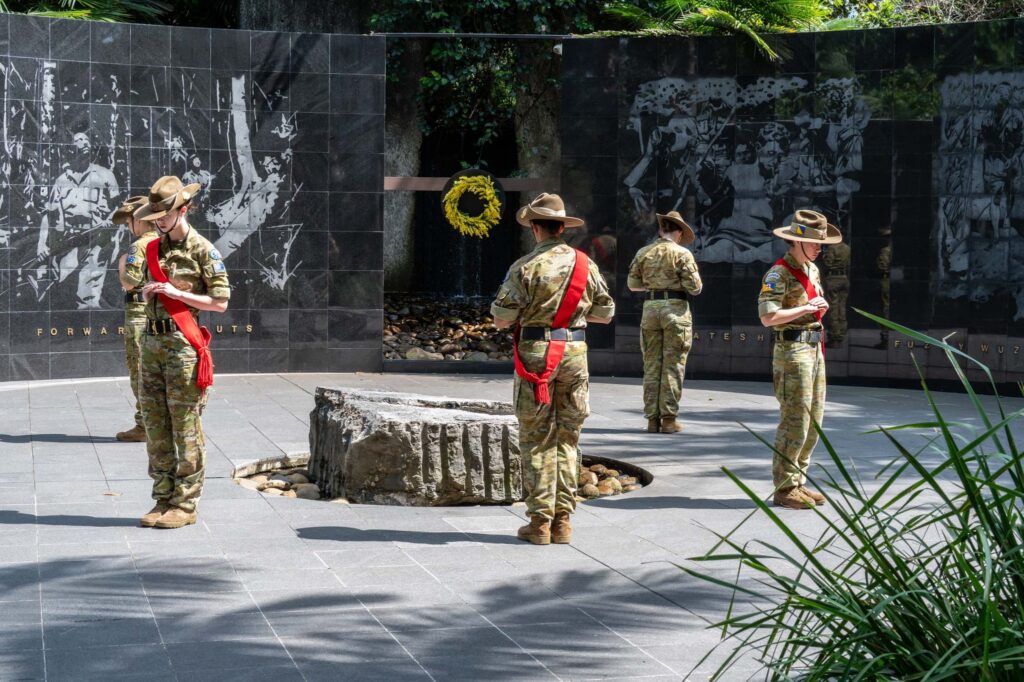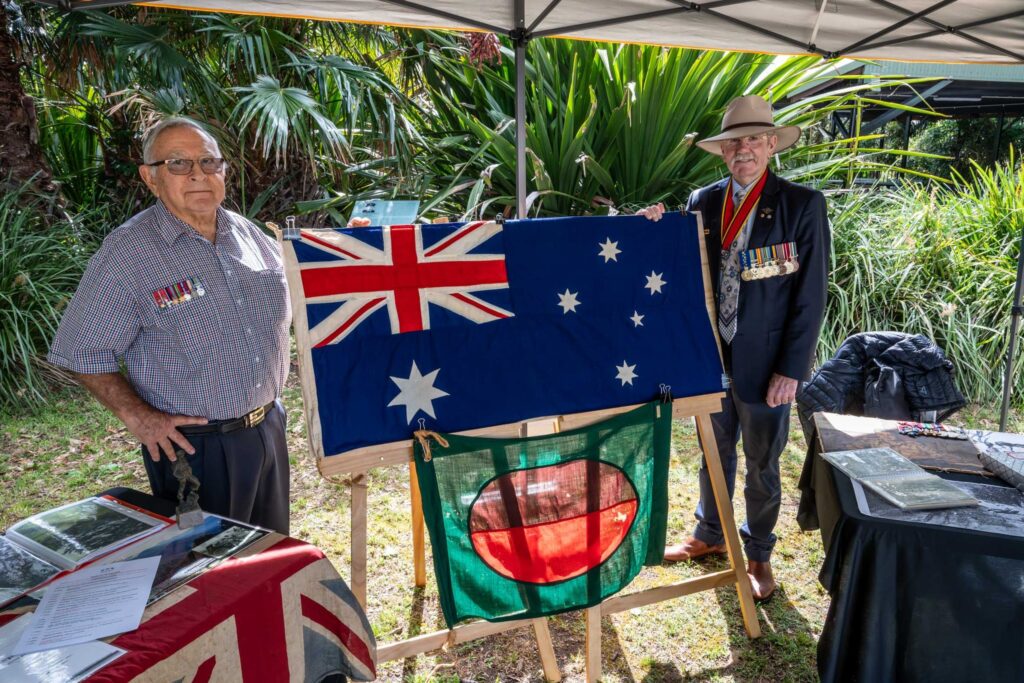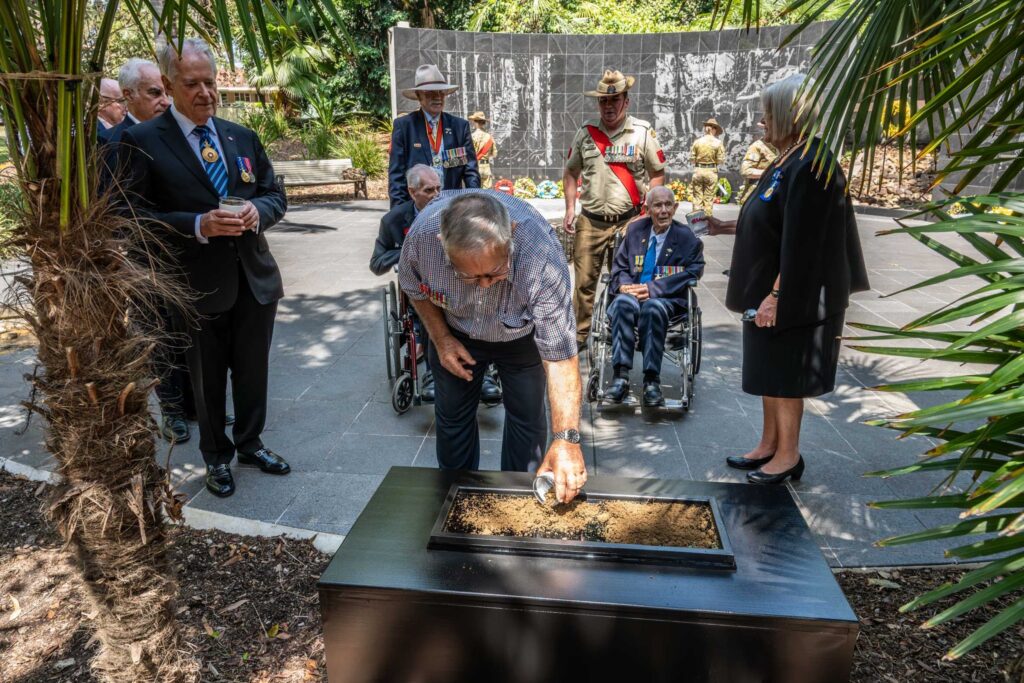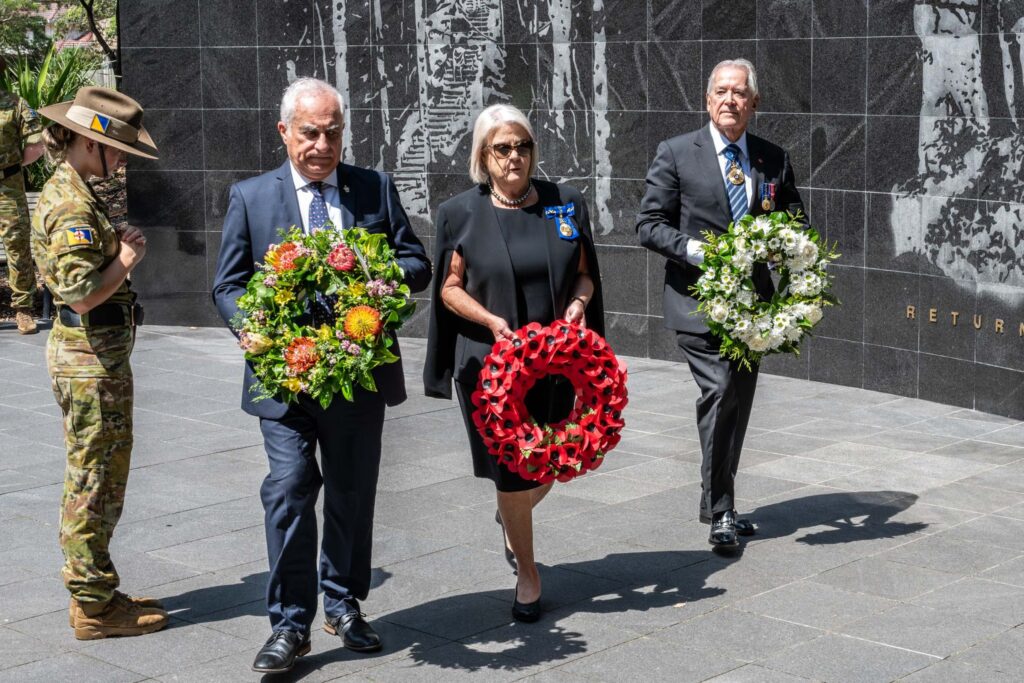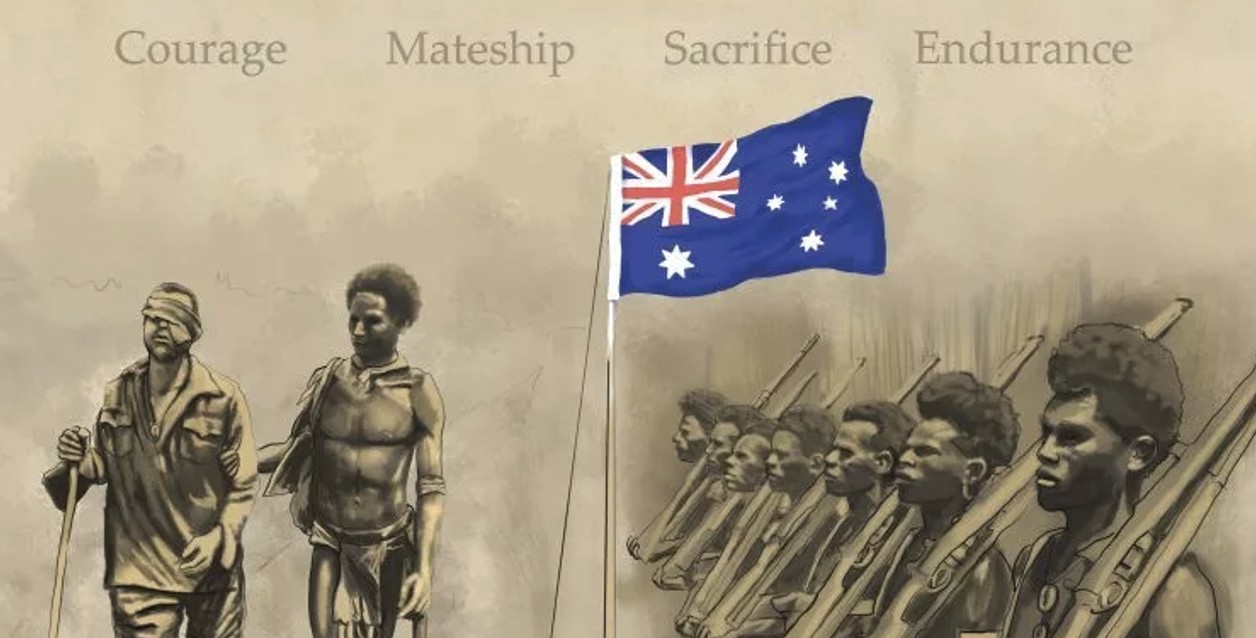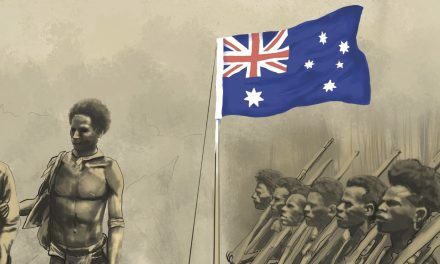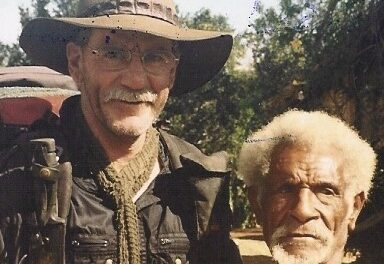Monday, 3 November 2025
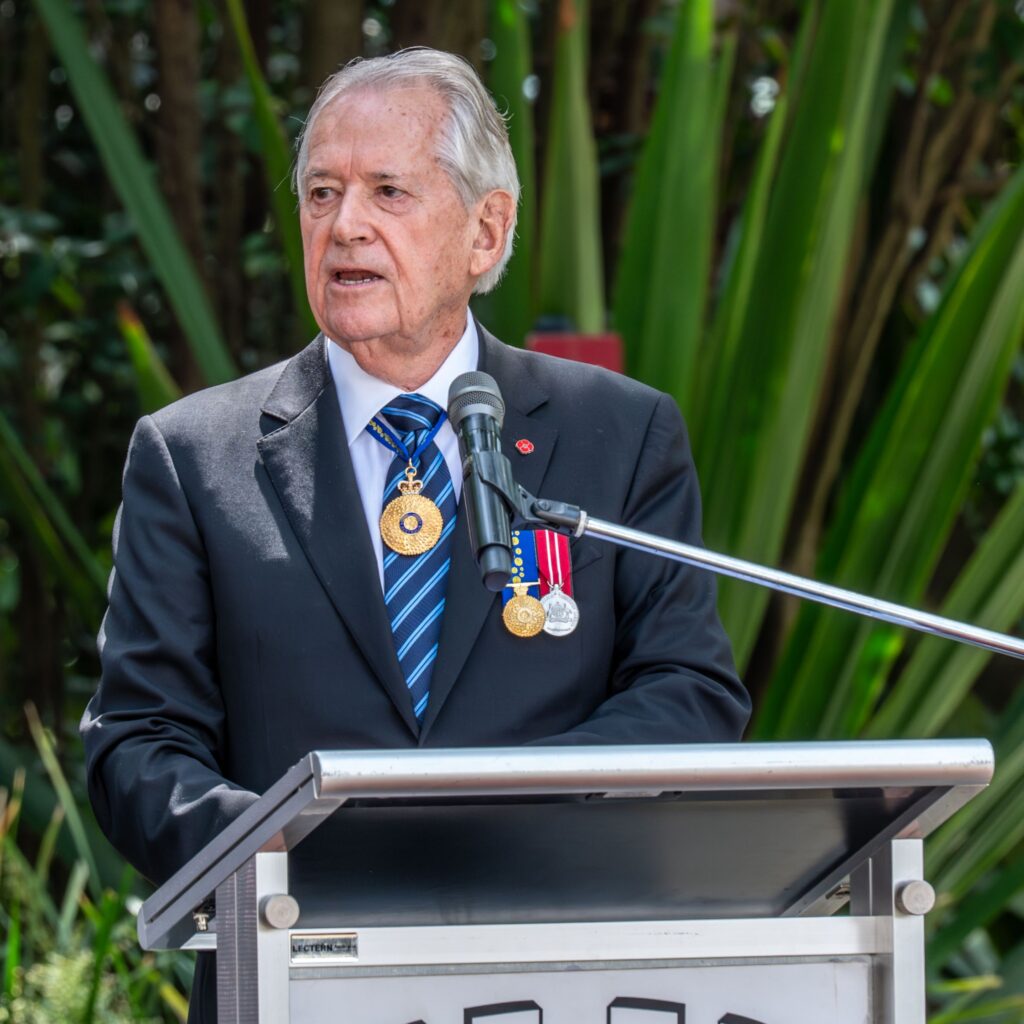
The Hon. D a Cowdroy AO KC RAN (Ret)
GEOGRAPHY
It takes only four hours to fly from Sydney to Port Moresby, the capital of Papua New Guinea, an exotic land of spectacular scenic beauty, rich in its culture, minerals and resources and having a population of 10.5 million people.
In 1941, at the time of the Kokoda campaign, the flight was about 10 hours duration.
This demonstrates the proximity of that country to Australia.
THE HISTORY OF AUSTRALIA’S INVOLVEMENT IN NEW GUINEA
During the second part of the 19th century, European countries were searching for their “place in the sun”, that is to establish colonies to spread their influence in other places the world, especially in the Pacific.
In 1884 Germany established a colony over the northern portion of Papa New Guinea. The land so acquired was named “Kaiser Wilhelms Land”
Germany established plantations of copra, cocoa and rubber during its occupation. It also established a powerful radio station at Bita Paka. The radio station was sending messages to German warships operating the Pacific, and as such posed a distinct danger to Australia’s security.
Accordingly at the outbreak of World War I in August 1914, The Australian Expeditionary Force was sent from Sydney and Brisbane to capture the radio station and take control of the colony. This was achieved. On 11 September 1914, the Expeditionary Force, overpowered the German radio station and on 21 September 1914 Germany signed the terms of capitulation of German New Guinea.
In this engagement, Australia suffered its first casualties. Dr Brian Pockley, who resided at Wahroonga and recently graduated from Sydney University as a medical doctor, was in the landing party. As the landing party moved up the jungle road towards the radio station, the German forces were lying in wait an opened fire. During the engagement, a German soldier required immediate attention and Dr Pockley gave him treatment. Thereafter Dr Pockley took off his coat with the Red Cross insignia (a Red Cross brassard) and placed it over a wounded Australian who was being returned to the ship (HMAT Berrima) from which they had landed. As soon as Captain Pockley removed his coat with the Red Cross, he became the first Australian casualty of World War I.
(For the history: see Official History of Australia in the War of 1914 – 18, Volume X: The Australians at Rabaul).
TREATY OF VERSAILLES
On 28 June 1919: Germany renounced in favour of the Principal Allies and Associated Powers her territories and islands around the world.
A contest then arose between Australia and Japan for the award of the mandate (control) of Papua New Guinea.
President Woodrow Wilson was favouring Japan and became irritated at Australia’s insistence that it should be awarded to Australia, claiming that the 6 million people of Australia and New Zealand could not hold up a conference in which including China some 1200 million people were represented.
Our Prime Minister William Hughes was steadfast in claiming the award to Australia of the mandate was justified because of the loss of 60,000 Australian troops in World War I.
Our Prime Minister was successful and Australia was awarded the mandate for Papa New Guinea in September 1920 the Commonwealth Parliament passed the New Guinea Act making provision for the acceptance of the mandate to be conferred on Australia.
From 9 May 2021 until 1975 when New Guinea achieved independence it was administered by Australia.
KOKODA TRACK
The Track is about 100 miles long extending from Buna in the north across the mountains Owen Stanley ranges to Port Moresby in the south.
The highest mountain, Mount Victoria is 13,363 feet (greater than 4000 m) in height and several others are 8500 feet (greater than 2 ½ thousand metres) in height.
The track changes constantly running along ridgelines the gullies across a fast-flowing rivers, some 15 m wide then back up through cliffs and through swamps. The vegetation is massive hardwood trees weighed down by vines creepers and bamboo making it is someone described, an “enormous greenhouse.”
The village of Kokoda is located along the track. A government administrative base was established in Kokoda Village in about 1904 and later a magistrate lived there to assist in the administration of law.
AUSTRALIA’S VULNERABILITY AS AT EARLY 1942
Our soldiers, the Second Australian Imperial Force had been sent overseas to fight in the Middle East and Greece against the German forces.
All that remained was our reservists.
The Royal Australian Navy had lost three of its five cruisers in less than 12 months our position was desperate.
In contrast,the Japanese forces appeared to be invincible:
Hong Kong had fallen in December 1941, the Malay Peninsula and Singapore had fallen in January 1942, Rabaul had fallen thereafter.
The Japanese planned to commence the New Guinea landing in May 1942.
They were aware that the USS Hornet and the USS Enterprise could not reach the South Pacific to interfere.
Victory fever had gripped the Japanese forces.
CALL UP
On 3 January 1942 the 39th Australian Battalion and the 53rd Australian Battalion landed in Port Moresby from Australia.
These battalions were militia or reserves mostly made up of men called up at the age of 18 years for compulsory training for service within Australia.
However, since PNG was mandated to Australia, that provided the basis for their service in that country the average age was 18 ½ years
Inexperience of these young soldiers was evident:
When the Minister for the Army visited the troops, he announced to one of them: rather imperiously:
“I am the Minister for the Army”
The unexpected response came: “Good onya Padre, you guys do a fantastic job”
KOKODA CAMPAIGN
Kokoda campaign consists of a series of battles along the Kokoda track between July and November 1942.
CHRONOLOGY OF BATTLES
May 1942: American codebreakers intercepted a Japanese message indicating they would attack over the Owen Stanley ranges
21 July 1942: the first of 14,430 troops of the Japanese South Seas Detachment land on New Guinea north coast
The Japanese General Horii expected to take Port Moresby in 10 days using the Kokoda Track.
23 July: first contact with enemy: enemy estimated to have 4000 troops: Australia had approximately 750 to 1000 troops
28 – 29 July: first major battle at villages along the Kokoda track towards Port Moresby: Australian troops withdraw.
In her book :
“The Architect of Kokoda” Robyn Kienzle describes the typical conditions as follows: “Exhausted troops climb an immense stairway to the jungle. A line of soldiers moved uneasily along a bush track. Then a shot rings out, and a man collapses. His mates peer into the dark green foliage trying to see an almost invisible enemy. Papuan carriers deftly manoeuvre a stretcher across a fast-flowing stream and up the steep bank on the other side. At Isurava, lines of yelling Japanese erupt from the jungle in a desperate Banzai charge. Then the deadly chatter of machine guns comes from the Australian positions…
1 August 1942 Australian troops inflicted on the Japanese their first undoubted defeaton land:
26 August 1942: the Japanese Major General, Horii planned to attack Isurava and Port Moresby
28 August Japanese major assault: two VCs were awarded
17 September Australians make their final withdrawal to Imita Ridge, only about 30 miles inland from Port Moresby
27 September 1942 – 29 October Australians push back the Japanese forces
2 November: Kokoda Village retaken
5 to 12 November: Australians meet strong opposition: 10,000 Japanese soldiers became casualties.
THE ROLE OF THE FUZZY WAS THE ANGELS
Along its length of about hundred kilometres, the Australian troops had to be supplied with food, ammunition and medical supplies.
They could only be brought in by air if the weather permitted or by Papuan porters known as the Fuzzy Wuzzy Angels
At all times, the Australians had the support of the Papuan peoples, who acted as bearers carrying supplies, and carrying back wounded soldiers.
BERT KIENZLE
Bert, Kienzle, of German extraction, played a pivotal role.
He had a plantation near Kokoda before the war. He was Commissioned as a Lieutenant in the Australian and New Guinea Administrative Unit was given the task of organising the lines of communication across the mountains. He had a deep knowledge of the country and managed to engage 1650 “Fuzzy Wuzzy angels”. With their help he managed to arrange supply dumps of food ammunition and medical supplies at depots along the track.
LEGEND OF THE FUZZY WUZZY ANGELS
One soldier wrote:
‘It was amazing to see them [the Papuans] carrying the wounded over the track… To see the track one would say it was impossible to carry out a stretcher over it, yet those natives did. No praise is too rich for them… They performed all tasks asked of them”
The loyal and faithful service provided by those angels throughout the campaign was an indispensable to the success of the battles.
Bert Kienzle said that when the carriers re-entered Kokoda after it was taken, they came bedecked with flowers and shrubs and all smiles they knew they had done well.
Incidentally, I mention that the words Fuzzy Wuzzy” is a term of great endearment and respect by the Australians for the Papuans.
The term “Papua” is a Malay word meaning “fuzzy haired man” as recorded by a Portuguese seafarer George de Meneses when he discovered Papua in 1526.
OBSERVATION OF JOURNALISTS
Osmar White and Chester Wilmot were appointed as journalists and Damien Parer as photographer to accompany the brigade as it made its advance across the Owen Stanley ranges.
COLOUR OF UNIFORMS
White noticed that the soldiers’ uniforms were the colour of the desert, not jungle green. This was raised with General Blamey. He responded that there was no need to change because the uniform colour was designed for the jungles of India.
Later Gen Blamey realised that khaki was unsuitable, and change to jungle green.
AIRCRAFT PARKED AT 7 MILE AERODROME NEAR PORT MORESBY.
Parer noticed that the aircraft were parked wing tip to wingtip at Jackson Field, Port Moresby, and had a message sent to General Rowell alerting him to the danger of the aircraft being so vulnerability parked However on the following Monday 17 August the aircraft were still lined up when the Japanese attacked destroying many of them and destroying supplies. Two Dakotas and three flying Fortress aircraft were completely destroyed, and another five transports and five fortresses were damaged.]
WHY IS THE KOKODA BATTLE SO SIGNIFICANT?
It exemplified courage, endurance, mateship and sacrifice
Kokoda demonstrates the determination and courage and endurance of its soldiers.
Our battalions faced overwhelming numbers in the Japanese forces; the Japanese forces were emboldened with their victories.
They were avenging the attack on Tokyo by the United States air raid this raid involved flying fully laden bombers from an aircraft carrier which had secretly approached Japan with the object of vindicating the Pearl Harbour attack. Such an attack had never been thought possible. The Japanese saw the air raid as an attack on the emperor’s godhead, a sacred person who was placed in danger by the raid.”
Compare this to the Australian forces:
The 39th Battalion consisted of:
- Citizen Military Force members. These reservists never expected that there would be required to serve outside the Australian mainland
- they were hurriedly trained, often no more than two weeks, before being shipped to New Guinea
- they were young, the average age being 18 1/2 years
EQUIPMENT
The Japanese had equipment which included mortar guns, mountain guns which they dragged across the Kokoda Trail.
In contrast, Australian troops had World War I rifles, three mortars and no heavy equipment.
ABILITY TO ENDURE
The conditions under which is the Australians fought was unimaginable:
- Terrain: the track rises and falls over its length as it traverses the Owen Stanley ranges
- thick jungle vegetation making it impossible to know where the enemy might be concealed
- no established facilities such as a camp, hospital or accommodation. The men slept in tents for 4 months
- Tropical climate with rainfalls exceeding one metre daily.
- repeated disappointments:
- two aircraft bringing additional soldiers to assist them but could not land as the pilots were concerned that the landing strip was unsafe
- destruction of transport aircraft by bombing which were to be used to bring supplies of food, and ammunition to the soldiers
- unsatisfactory equipment: the uniforms were khaki and nor jungle greens; ultimately this was rectified
- leaders who had no conception of the conditions under which the soldiers were operating.
GRATITUDE OF AUSTRALIA
The Kokoda campaign saved Australia. Had the Japanese succeeded in reaching Port Moresby (and they were only about 40 km away) they would have had access to airfields from which to bomb Australian cities, as well as a port for the resupply of their vessels.
It is reported that from the closest point Japanese forces came, they could see the lights of Port Moresby in the distance.
If Port Moresby had fallen, it would have enabled the enemy to have access to a port and airfields to attack Australia.
There would have been nothing to stop the enemy.
Accordingly, strategically, Port Moresby was of vital strategic importance.
Field Marshal Sir Thomas Blamey, addressing the men on 24 December 1942 said:
“In all its history, both the first and second [AIF], had never been called upon to perform a more difficult task than fell to you.”
The invincibility of the Japanese became a myth.
Field Marshal Sir William Slim (later Governor General of Australia) and who served in the Burma campaigns
‘Some of us may forget that of all the allies, it was the Australian soldiers who first broke the spell of the invincibility of the Japanese army’
General MacArthur said:
“I have nothing but praise for you and your men”
OUTSTANDING GALLANTRY AND SELF-SACRIFICE
There are many many stories of accounts of the gallantry of the Australian soldiers, the enemy including Bruce Kingsley VC. When under heavy attack, he fearlessly faced them with a Bren gun and having destroyed most of them, was himself killed.
Our Prime Minister John Howard said at a commemoration that
“The true significance of the battles on the Kokoda was the courage, the commitment, the professionalism and the raw love of country of the Australian Army that inflicted defeat on the Japanese.”
The following words summarise the legend of Kokoda:
Major General Alan wrote on 5 January 1945
“They put forth an effort which, if one had not actually seen it, one would have said was beyond human endurance.”
ENDURING BONDS
The most enduring and significant consequence of the Kokoda campaign is the lasting bond of friendship which it is created between Australia and New Guinea.
Our former Prime Minister, John Howard said of them:
The people of Papua New Guinea created: “A place in the Australian heart that will never be relieved”. (14 August 2002)
The bond which has been created is evident when our Prime Minister, Mr Paul Keating, visited Kokoda on the 50th anniversary. He knelt and kissed the ground in 1992:
He said:
“They died in defence of Australia and the civilisation and values which had grown up there. That is why it might be said that, for Australians, the battles of Papa New Guinea were the most important ever fought”.
The bond was reinforced on 17 September 2025 by the signing of a mutual defence agreement between Australia and New Guinea.
This is the first in 70 years.
CONCLUSION
By your presence here today, each of you have honoured our service personnel who participated in the Kokoda campaign.
Your act of remembrance keeps alive the trust which Osmar White, the wartime journalist wrote in his book “Conquerors Road”.
White was in a landing ship when a bomb struck it and four men standing beside him were killed, he said:
“Why these four men should have died, and I live and walk, I don’t know. But I know this. The living has the cause of the dead in trust.”
The cause of the dead was the defence of what they believed to be truth, justice and decency.
By the presence of each one of you here today, you are keeping alive that sacred trust.
Dennis Cowdroy
3 November 2025
PNG National Anthem
Tribute to the ‘Fuzzy Wuzzy Angels’
